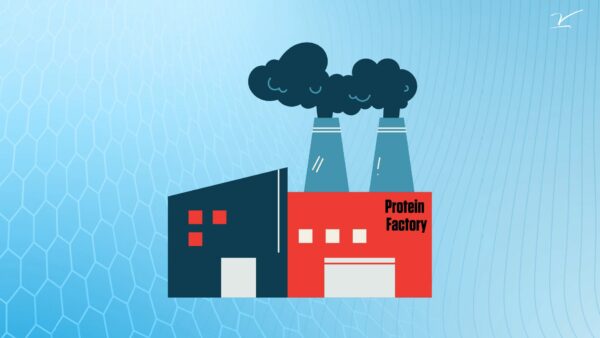Susanna’s Cool Cancer Research Finds: May 2024
Every week, Dr. Susanna Greer, the V Foundation's Chief Scientific Officer, shares her cool cancer research finds on LinkedIn. Read more below to see highlights from the latest top finds!
May 2, 2024
Planting a new seed for breast cancer research.
Breast cancer treatment has made significant strides in recent years, offering better outcomes and new hope to many. We have highlighted breast cancer research funded by the V Foundation here before (https://www.linkedin.com/pulse/unexpected-good-sign-tumor-associated-macrophages-greer-ph-d–a6nge/?trackingId=PqvTU9RORxuqGNdVIHKSxw%3D%3D) and I am so proud of the work our grantees are doing every day. However, despite these efforts, and the efforts of many others, some breast cancer patients continue to face poorer survival rates, particularly those from disadvantaged neighborhoods.
 I am a gardener and to me it is like tending a garden with the best seeds and fertilizers but overlooking the soil’s condition. If the soil is contaminated or lacks nutrients, even the best plants will not thrive. Similarly, in the context of breast cancer, the “soil” is the neighborhood where a patient lives.
I am a gardener and to me it is like tending a garden with the best seeds and fertilizers but overlooking the soil’s condition. If the soil is contaminated or lacks nutrients, even the best plants will not thrive. Similarly, in the context of breast cancer, the “soil” is the neighborhood where a patient lives.
Disadvantaged neighborhoods often have fewer resources, limited access to healthcare, and other social stressors that could affect breast cancer outcomes. To understand why some gardens flourish while others struggle, we must examine the broader environment, not just the plants.
In this week’s Cool Cancer Find, the V Foundation Grantee Dr. Neha Goel Sylvester Comprehensive Cancer Center did just that to address disparities in breast cancer survival. Dr. Goel’s goal was to consider the impact of neighborhood disadvantage, even when individual factors, tumor characteristics, and treatment are considered.
In this study, Dr. Goel and team show that neighborhood disadvantage plays a significant role in breast cancer survival, even after considering other factors like tumor characteristics, treatment, and individual differences. Their research suggests that there is something about the environment and the conditions in disadvantaged neighborhoods that affects health outcomes in a way that’s not yet fully understood.
I love this research because Dr. Goel goes further than previous research by suggesting ways to address these disparities, including a focus on which components of the neighborhood environment might influence breast cancer survival. Things like examining access to healthcare facilities, pollution, and safety, as well as stress and community support.
We all want to bring meaningful change, and adopting a broader perspective can help healthcare providers and policymakers better address the underlying causes of disparities in breast cancer survival, which can in turn can guide precision medicine in oncology by incorporating neighborhood disadvantage into the risk assessment of vulnerable populations. This could lead to targeted interventions and community-based programs that address the broader environmental factors contributing to breast cancer disparities, fostering a healthier “garden” for everyone.
Read Dr. Goel’s paper here: https://doi.org/10.1001/jamanetworkopen.2024.7336 and find her lab at Neha Goel – Laboratory | Sylvester Comprehensive Cancer Center | University of Miami Health System (umiamihealth.org)
May 7, 2024
Pancreatic ductal adenocarcinoma (PDA): The party crasher.
Imagine you’re at a big party where most people seem likeable and fun, but there’s this one guest who goes unnoticed, hangs out in dark corners, and suddenly out of nowhere, causes complete chaos. That’s pancreatic ductal adenocarcinoma (PDA), a type of pancreatic cancer with a reputation for being sneaky and very hard to treat. PDA has a low survival rate, partly because it tends to be diagnosed late when the cancer already spread to other parts of the body. It’s like a terrible party crasher who blends in until it’s too late to stop them.
 Researchers know that an “accomplice party crasher” in Pancreatic ductal adenocarcinoma or PDA is a gene called KRAS, which is mutated in over 90% of cases. Think of KRAS as the lead of a rebellious gang of genes. Other members of this gang include genes called CDKN2A, TP53, and SMAD4/DPC4-genes often involved in regulating cell growth and death. When they go rogue, they help PDA cancer cells grow out of control and spread.
Researchers know that an “accomplice party crasher” in Pancreatic ductal adenocarcinoma or PDA is a gene called KRAS, which is mutated in over 90% of cases. Think of KRAS as the lead of a rebellious gang of genes. Other members of this gang include genes called CDKN2A, TP53, and SMAD4/DPC4-genes often involved in regulating cell growth and death. When they go rogue, they help PDA cancer cells grow out of control and spread.
To understand more about what makes PDA so good at spreading, the V Foundation grantee Dr. Christine Chio and colleagues Columbia University Irving Medical Center are looking deeper into these DNA and RNA ‘playbooks’ that cancer cells use. These playbooks are like blueprints and instructions for building and operating cells. But we also need to understand the “protein factory” because proteins are the actual workers and machines that make cells function. Ie, we know the party crashers involved, but we don’t know the disguises they are wearing, how many are showing up, or when they are going to arrive.
One tool Dr. Chio and colleagues use is a technique called “dynamic stable-isotope labeling by amino acids in cell culture” or dSILAC. It’s a VERY long name for a relatively simple technique for adding invisible trackers to these protein-building materials to see how quickly the proteins are made and, in turn used up, in cells. The researchers are also using organoids, (which are incredible!), like mini-tumors grown in labs. The team takes cells from PDA tumors and grows them into organoids to study their behavior.
I love this paper for a lot of reasons, some of which are the cool techniques the researchers use. From their organoids and dSILAC, Dr. Chio and team found that metastatic PDA tumors (the ones that have spread) have a faster protein turnover rate than primary tumors (the original ones). This means their protein factories run faster, turning over proteins at a higher rate. Think of it as a factory working overtime to keep up with demand. This rapid turnover is particularly noticeable in mitochondrial proteins, which are essential for energy production in cells.
 The researchers found that the mitochondrial proteins have a shorter lifespan in metastatic tumors, suggesting they are getting replaced more often. This could be because metastatic tumors need more energy to spread and grow. The finding that metastatic PDA has a faster protein turnover rate, especially in mitochondria, offers new insights into why this cancer spreads so aggressively. Their findings help identify targets for future treatments by focusing on the mechanisms that control protein stability and mitochondrial function. These are incredible findings! Congratulations to all involved and keep up the great progress-cancer patients need you.
The researchers found that the mitochondrial proteins have a shorter lifespan in metastatic tumors, suggesting they are getting replaced more often. This could be because metastatic tumors need more energy to spread and grow. The finding that metastatic PDA has a faster protein turnover rate, especially in mitochondria, offers new insights into why this cancer spreads so aggressively. Their findings help identify targets for future treatments by focusing on the mechanisms that control protein stability and mitochondrial function. These are incredible findings! Congratulations to all involved and keep up the great progress-cancer patients need you.
Read Dr. Choi’s paper here Systematic analysis of proteome turnover in an organoid model of pancreatic cancer by dSILO (cell.com) and find her lab at Christine Iok In Chio, PhD | Herbert Irving Comprehensive Cancer Center (HICCC) – New York (columbia.edu)
May 18, 2024
Outsmarting liver cancer with a double whammy.
For this week’s Cool Cancer Find, we dive into an incredible paper from the V Foundation grantee Dr. Nabeel El-Bardeesy and his lab Mass General Hospital. To understand this study, imagine your body is like a city, busy, with different roads guiding city traffic. In our body the roads are our metabolic processes. But sometimes, a malfunctioning traffic signal interrupts the flow of traffic – in this case our troublemaker is a protein called FGFR2. It’s like a traffic light gone haywire, this time in the liver, telling the cells there (called hepatic bile ducts) to keep going, to grow uncontrollably, leading to a type of cancer called intrahepatic cholangiocarcinoma (ICC).
 About 12-15% of ICC cases have this troublemaker FGFR2, which means they’re particularly sensitive to certain medications called FGFR inhibitors. These medications act like traffic cops, trying to stop FGFR2 from causing chaos in the liver cells.
About 12-15% of ICC cases have this troublemaker FGFR2, which means they’re particularly sensitive to certain medications called FGFR inhibitors. These medications act like traffic cops, trying to stop FGFR2 from causing chaos in the liver cells.
However, there’s a catch, while these medications can slow down the troublemaker, they don’t always completely stop it. So, Dr. Bardeesy and his team decided to dig deeper into how FGFR2 wreaks havoc and how these medications work. They found that FGFR2 not only encourages the liver cells to grow but also changes how they get their energy TO GROW. It’s like FGFR2 is whispering in the cells’ ears, telling them to gobble up lots of sugar (glucose) to fuel their rapid growth.
When they blocked FGFR2, they noticed something interesting: the liver cells couldn’t use as much sugar anymore. But instead of giving up, the cells found another way to get their energy. It’s like when your favorite pizza place closes, so you go to the smash burger joint next door instead.
This change in energy supply made the liver cells vulnerable in a different way. Dr. Bardeesy and his team realized they could target this vulnerability by combining one drug with another treatment that focuses on the cancer cells’ energy factories, called mitochondria. Basically like hitting FGFR2 with a double whammy, blocking its signals and shutting down its backup energy source.
And here’s where this study gets even more fascinating. It’s possible that by making similar changes to our diets, changes like intermittent fasting (taking breaks from eating), could make some cancer treatments even more effective. Overall, this study uncovered some crucial insights into how FGFR2 causes trouble in liver cells and how we can outsmart it with targeted treatments and clever dietary tricks. If these strategies work as well as researchers translate them from the lab to the clinic, they will offer hope for patients battling this type of cancer, improving outcomes and quality of life.
Read Dr. Bardeesy’s paper here: FGFR inhibition blocks NF-ĸB-dependent glucose metabolism and confers metabolic vulnerabilities in cholangiocarcinoma | Nature Communications and follow his lab at: Bardeesy Lab | Massachusetts General Hospital (massgeneral.org) .




